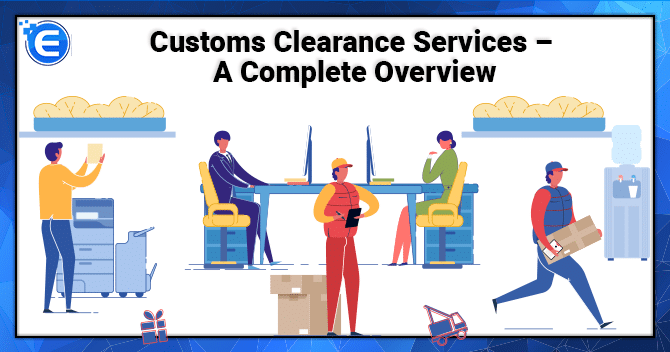All the goods and products that come to a country from outside and go outside to another country have to go through the customs clearance process. In order to clear this process, the importers and exporters of the goods must submit valid and relevant documents so that the customs officials check them and give a green signal. Once the clearance process completes, the shipment is released from the customs and reaches the location of the customer by the courier service provider. There are various import export courses online which can be referred to and the process of custom clearance in India can be understood so in this article, we will be discussing about the major steps involved in the process of custom clearance
4 easy steps to follow for the custom clearance process
When the shipment arrives at the customs for clearance, the process involves four major steps which are described in detail below
- Custom officials will examine the documents

As discussed earlier, the first step in the clearance process involves the customs officials examining your official documents. Two things which they look at initially are whether the papers are complete and are accurate. The commercial invoice and the shipping label must be complete as well because the commercial invoice contains the contact details of the shipper, the receiver and also contains the shipping date and the airway bill number. All these are cross-checked by the customs officials. There are various other documents which are necessary as well and you can find the list in the customs website.
- Calculation of import duties based on the papers produced
Another important reason why customs officials check the papers and other necessary documents is to assess the import duties and taxes that are involved in the import and export of products in India. Depending upon the type of goods, their total value and the import rules in the country, the taxes and import duties are calculated. Import duties are calculated when the minimum taxable threshold for the imported goods exceed. Goods that come under the taxable amount are free from import duties. The taxable threshold differs in different countries.
- Payments of taxes and duties
If your product exceeds the taxable threshold amount and is applicable for the payments of duties and taxes, the next step is the request by the customs for the payments of duties. This is done after the customs official has checked whether the duties and taxes have been paid or not. The process of payment of duties involves two steps.
First, is the method of “Delivery Duty Paid” in which the import duties and taxes are already paid on your behalf by the brokers of the courier services and the same is mentioned in the attached shipping label. DDP is considered the best process for the smooth clearance of the customs.
Second method is called “Delivery Duty UnPaid” where the import duties and taxes are unpaid and the shipment is forwarded to the independent customs broker to collect the unpaid amount. These independent brokers will charge extra money from the shipment owners in terms of brokerage and storage charges which will be costly to the customer.
- Clearance of shipment
The final stage of the customs clearance process is actual clearance of the shipment after receiving all the taxes and duties. As soon as the shipment is cleared from the customs, the courier service you have chosen, transports the shipment from the customs to your desired location which is your destination. In general, shipments never get stuck at the customs and if they do for any reason, it is because of the improper paperwork.

